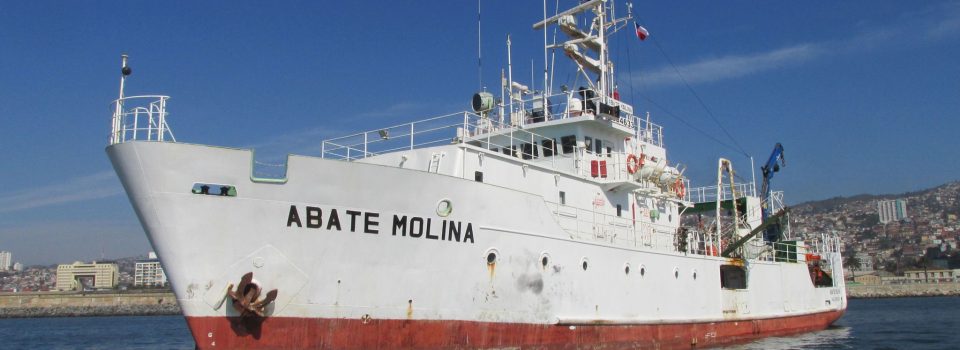Scientific vessel Abate Molina sailed to study common hake
August 10th, 2016The study extends across the area between northern Totoralillo in the region of Coquimbo, to the north of Ancud in the Region de Los Lagos.
The scientific ship Abate Molina, of Instituto de Fomento Pesquero (IFOP) sailed at 12 hours, of Monday July 25, from the port of Valparaiso, intended to the Coquimbo Region, with a total staff of 29 people, to start a new scientific expedition, whose overall objective is to evaluate the stock of hake through the hydro acoustic method.
The specific objectives are:
To estimate biomass (weight), abundance (in number) and spatial and bathymetric distribution of hake stock in the area and study period.
To evaluate the composition of sizes, age and sex from the stock of common hake in the area and study period, referred mainly to its spatial and bathymetric distribution.
To determine the Gonadosomatic index, macroscopic stages of maturity, maturity level and hake fecundity from the research matters.
To determine the relative importance of accompanying fauna while fishing of common hake in the area and study period, with special emphasis on the cuttlefish (Dosidicus gigas).
To characterize the spatial and bathymetric distribution of eggs and larvae of common hake and determine the bio-oceanographic conditions associated with spatial and bathymetric distribution of hake resource in the area and study period.
To characterize and analyze aggregations of hake in the area and study period,
The research covers the area between northern Totoralillo in the region of Coquimbo, to the north of Ancud in the region de Los Lagos. The project manager and Cruise Head is the fishing engineer of IFOP, Mr. Jose Cordova, while the ship’s captain is Enrique Quiero.
The information collected on cruises (size information, distribution and biological characteristics of the stock) will be analyzed by researchers of IFOP, and this will determine the state of the resource. Consequently, a report is performed on the maximum annual quota of exploitation recommended.
